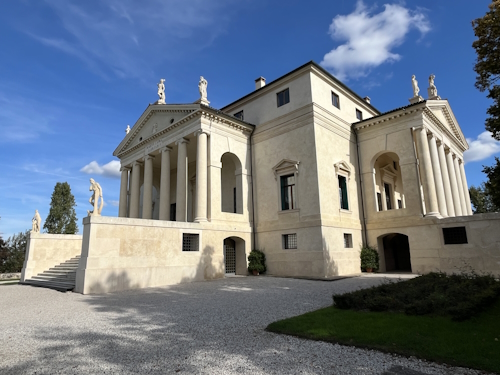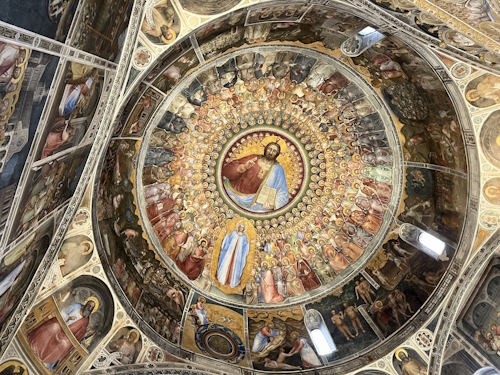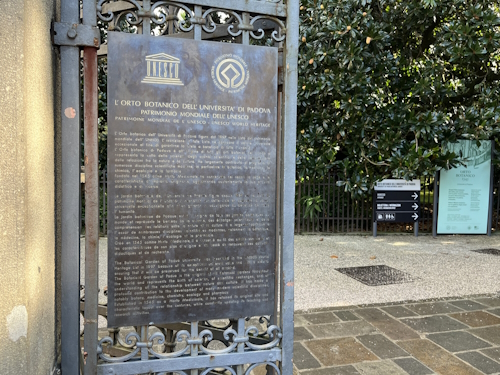Quick Access
1204 of 1223 WHS have been reviewed by our community.
Waterton Glacier International Peace Park
Jgriffindor6 United States - 05-Oct-24

I visited Glacier national park in August of 2023. While I have been to a significant chunk of national parks in the US, Glacier easily takes one of the top spots due to its amazing scenery and outstanding hiking opportunities. However, you have to really plan ahead in order to fully enjoy the park.
The NPS has implemented a reservation system for vehicles in order to control the amount of visitors [...]
Read OnOkefenokee National Wildlife Refuge (T)
Jay T USA - 05-Oct-24

Okefenokee, the land of trembling earth. Or perhaps etymologically, "bubbling water". Either origin describes this swamp well -- a land of peat and springs which serves as the headwaters for two rivers at the north end of the Florida peninsula. The Okefenokee National Wildlife Refuge is aiming for inscription on the World Heritage Site list in 2026, so in July 2023 I took a trip down to southern Georgia to see what makes the swamp unique, especially in relation to the Everglades in neighboring Florida.
Read OnFalun Great Copper Mountain
Triath - 01-Oct-24

Falu Gruva is the most famous mine in the history of Sweden, where copper mining began in the early Middle Ages, then reached its largest scale in the 17th century, when about 1,300 miners worked here. Mined copper allowed Sweden to conduct military aggression and pay for its expenses with coins. By the end of the 18th century, the copper reserves were exhausted, in 1992 the mine was closed forever.
There are about 30 km of underground tunnels, but the excursion down is quite short and modest (although I have not been to the copper mines yet, so I ticked the box).
Read OnYin Xu
Joel on the Road Australia - 05-Oct-24

I’m generally wary of sites in the “something important happened here, but is no longer actually here” category, but Yin Xu was a pleasant surprise. As Els noted in her review, there are two components to this site: the old city, and the royal tombs. But the highlight of this site isn’t actually on the list: the gleaming new museum which had only just opened when we visited in August 2024.
The site is largely focused on the Shang Dynasty, which lasted from approximately 1700-1000 BCE. Most of what we know about the Shang comes from their writing system, inscribed in tiny characters on tortoise shells and other animal bones. It’s considered the birthplace of Chinese writing, and many modern Chinese characters have directly evolved from their Shang equivalents.
Read OnChurches and Convents of Goa
Zoë Sheng Chinese-Canadian - 04-Oct-24

You can walk around the area in maybe 4 hours. I would find it hard to imagine you spend more time EVEN if you have a guide. Most of what you see here are churches, much uglier than European based ones, and the main interest is that they were brought here and thus brought Christianity to the area.
It's also confusing if only churches are inscribed or the entire area. The local signs will guide you to the UNESCO Viceroys Arch, Adil Shah Palace Gateway which is in front of the perhaps Cajetan (locally called Church of Divine), the Archaeological Museum, but since it's not far off what you visit anyway you can take the quick walk down.
Read OnBlog Countries
Top Tips for the wider Veneto Hotspot
Last week I was in Northeast Italy, celebrating the 10th anniversary of our immersive Art History course in Florence with my study mates (it turned out to be ‘only’ 9 years ago we found out during the trip). We were roughly in the Veneto Hotspot, covering Verona, Padua, Mantua, and Vicenza. I also added two days on my own in Bologna. These were all revisits for me. It's a region that has been popular for its treasures of art for centuries, even the French troops took a lot home from here as seen in the new Napoleonic booty connection.
Below are my Top Tips for Travel to the Veneto Hotspot as a WH Traveller in 2024.
1. Choose your base wisely
We have Venice as the center of the Veneto Hotspot and while its international airport and two inner-city WHS make this a logical choice, I’d recommend choosing a different base. Venice is the most expensive and the most touristy city in this region. For lower costs of hotels and food in restaurants, consider Verona, Padua, or even Bologna. The latter’s university crowd guarantees cheap eateries and the city has excellent train connections with the rest of Italy and a busy airport.
2. Allocate at least a day per city
During my first trip to this region in 2007, I made the mistake of combining visits to Vicenza and Padua in one day. They’re just 20 minutes apart by train! I ended up missing the interior of the Villa Rotonda (photo 1, made it this time) and my time slot for the Scrovegni Chapel. This time we just did one day, one city and we travelled there from one base (so we did not have to change hotels). There’s so much to see in all of these cities. Many of the WHS also are serial sites, so you’ll need to visit several places anyhow. You’ll easily walk 12-20 km a day within the town limits.
3. Even Italy gets digital
I fear for the future of the Italian tobacco shops! On this trip, I didn’t have to search for one as bus tickets now can be bought via an app or in some cities even by just tapping your credit card. The Trenitalia app also works well for train tickets – say goodbye to the ‘validation stamp’!
4. It’s all quite relaxed
While Venice is always crowded and summer visits to this region should be avoided all around, the smaller cities in this batch are very pleasant in Spring and Autumn. They’re all a bit touristy (Verona probably the most), but nowhere it was uncomfortably busy or too tacky. Also, in comparison to 5-10 years ago, visiting rules often have been relaxed. You can take pictures inside everywhere, even of the most precious frescoes and paintings. You can buy tickets on the spot (even for Scrovegni’s Chapel) and they will accept both cash and cards. There’s also surprisingly little security at the sights (no bag scans etc), albeit most entrances are ‘guarded’ by fierce Italian women who will scold you for any reason.
5. Padua is the best recent WHS. Overall.
It is hardly imaginable that Padua’s frescoes only were inscribed in 2021, as #57 of Italy’s 60 WHS. It is rated #9 in Italy now and #1 overall of the sites inscribed globally over the past 5 years. These frescoes will appeal to anyone, you don’t need to be an art lover or a religious person. The presentation of the major components also is very good (the Baptistery (photo 2) almost trumps the Scrovegni Chapel). The town wears its WH status proudly with notable banners stating “Padova Meravigliosa! Siamo Patrimonio UNESCO” (Italian for “Wir sind Welterbe”), and also a good new(?) plaque at its second WHS, the Botanical Garden (photo 3).
What’s your take on this region?
Els - 20 October 2024
Comments
Astraftis 21 October 2024
Veneto is incredibly rich under many aspects. Let's not forget also part of the Dolomiti and, why not, the Prosecco and other vineyard hills.
I think each city can warrant at least a weekend trip, not to speak of Venice, so here more than elsewhere I would also advise against rushing it and to focus on each goal.
The position of Padua could be the best one for the hub, but lately it is becoming too expensive, probably as an effect of similar speculations. So maybe I would suggest the less "trendy" Vicenza as the "secret" hub. Venice is a world apart: too demanding and to... isolated to serve as a hub, in my opinion. I would not ever consider Bologna to explore Veneto, too far and different. Maybe Ferrara, but still. They are however one next logical step in exploring Northern italy.
Do not fear for tobaccos, Els! They have many other irreplaceable services, like being bars :-) Anyway, I find the local apps for public transport some of the less useful and worst done things ever, it is simply better to buy tickets somewhere. And you still have to validate some Trenitalia tickets, even if digital (yeah, really a genius move on their part...).
Lubos Lier 20 October 2024
Although I visited most of the heritage sites in the region its definitely on my bucket list to revisit (hopefully repeatedly) and spend some quality time in the region to soak up some more of the cultural atmosphere from this special corner of Italy.
CugelVance 20 October 2024
Great article!! Just too many things to see in that region! One has to plan very carefully....


